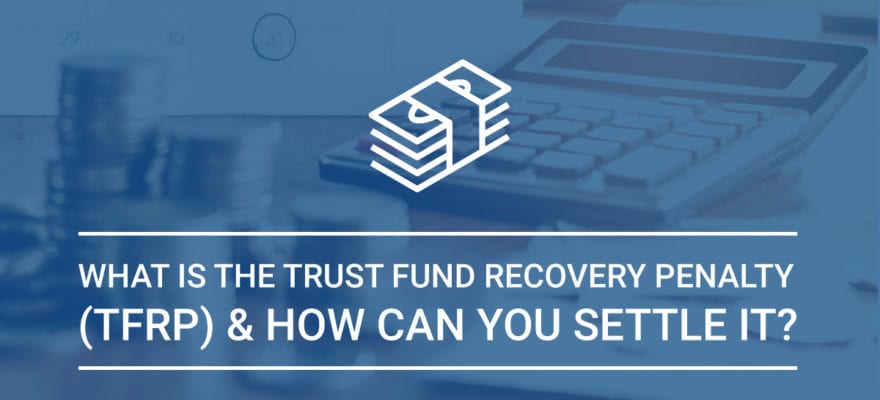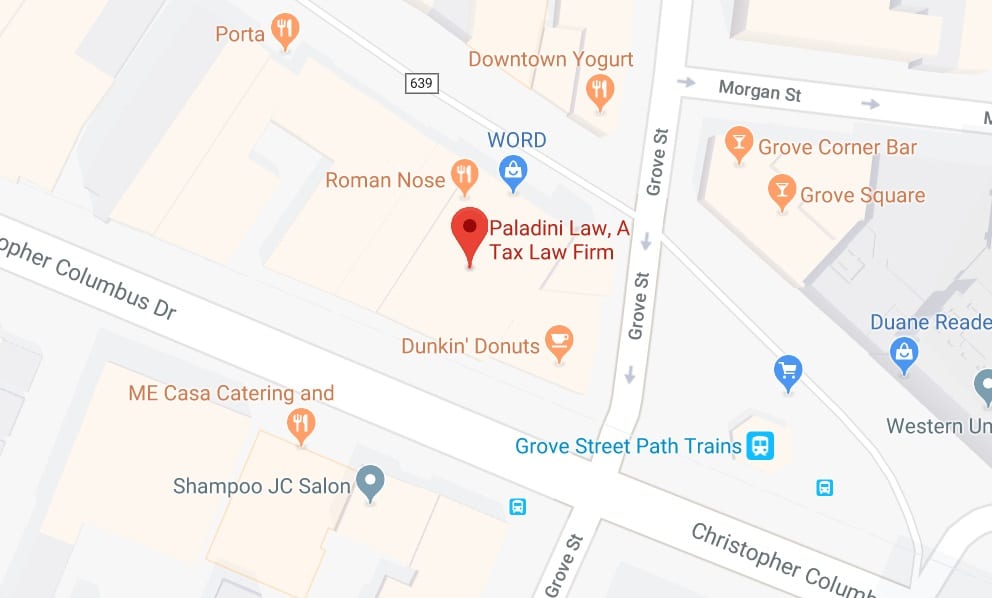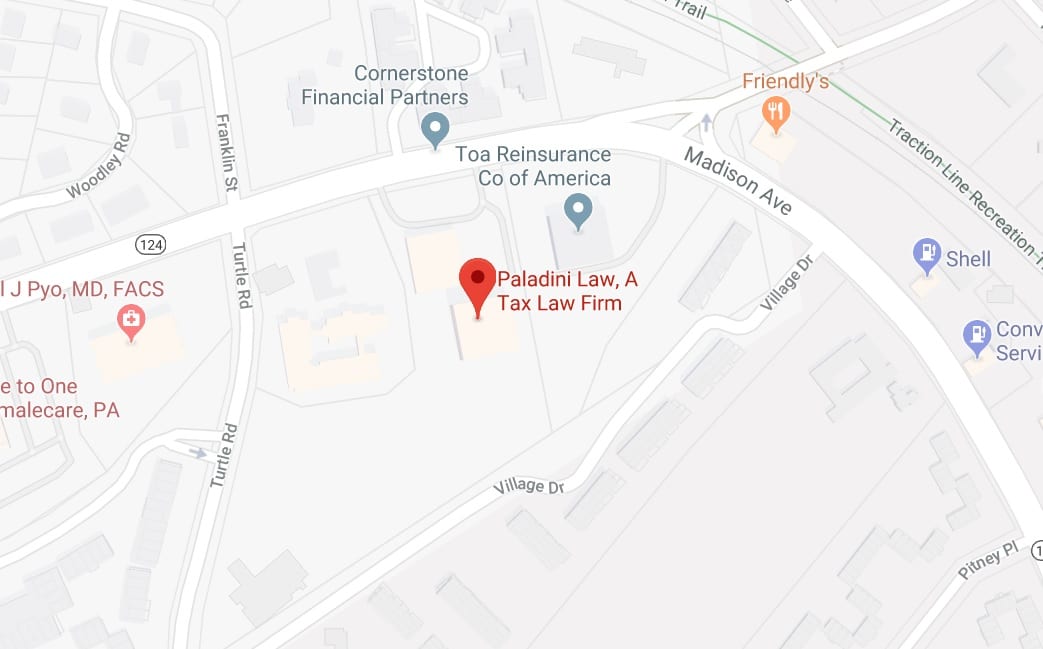Stop me if this sounds familiar. Your business is experiencing a temporary cash crunch. You have some accounts receivable, or a big project on the way, but for now, you can barely pay your employees and keep the lights on.
So you “borrow” from your payroll taxes aka your employment taxes payments to continue paying employees and keep the doors open.
What’s the worst that could happen? You have a corporation or LLC and therefore your personal liability is limited. Right?
Wrong!
Enter the trust fund recovery penalty or TFRP for short. Trust fund tax is money that you legally withhold from an employee’s paycheck and hold “in trust” until it’s time to pay the funds to the Treasury via the Electronic Federal Tax Payment System. It consists of the income tax and the employees’ shares of Medicare and Social Security. The IRS is much harsher with this type of unpaid taxes than other types of unpaid taxes such as federal income taxes.
How Much is the Trust Fund Recovery Penalty or TFRP?
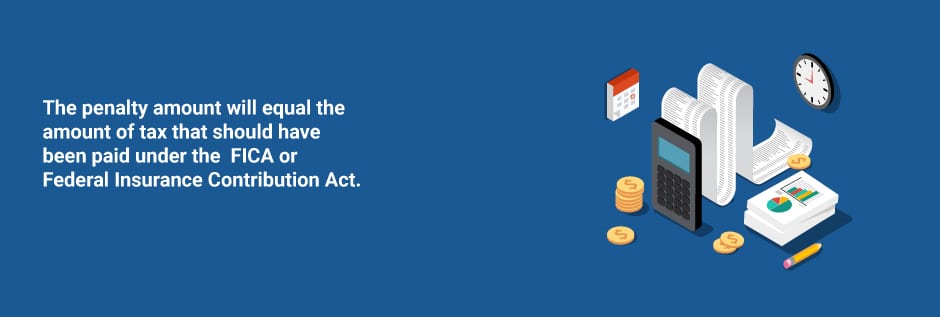
Stop me if this sounds familiar. Your business is experiencing a temporary cash crunch. You have some accounts receivable, or a big project on the way, but for now, you can barely pay your employees and keep the lights on.
So you “borrow” from your payroll taxes aka your employment taxes payments to continue paying employees and keep the doors open.
What’s the worst that could happen? You have a corporation or LLC and therefore your personal liability is limited. Right?
Wrong!
Enter the trust fund recovery penalty or TFRP for short. Trust fund tax is money that you legally withhold from an employee’s paycheck and hold “in trust” until it’s time to pay the funds to the Treasury via the Electronic Federal Tax Payment System. It consists of the income tax and the employees’ shares of Medicare and Social Security. The IRS is much harsher with this type of unpaid taxes than other types of unpaid taxes such as federal income taxes.
How Much is the Trust Fund Recovery Penalty or TFRP?

The TFRP amount will equal the amount of tax that should have been paid under the FICA or Federal Insurance Contribution Act. For example, if a single paycheck should have had $353 withheld for income tax, Social Security, and Medicare, this is the amount of the TFRP.
Although it’s called the trust fund portion of the taxes, there’s no actual obligation to hold the funds in a trust account. Nevertheless, the IRS takes trust fund cases extremely seriously, essentially saying you are stealing from your employees’ wages. This is why it’s always important to pay trust fund taxes as they are due.
Any employer who intentionally neglects this obligation can incur a Trust Fund Recovery Penalty (“TFRP”) from the government. It is presently one of the largest penalties imposed by the IRS, which will go as far as to seize personal assets to recoup the money. The TFRP is equal to the taxes owed.
And it’s not just employers that should be worried. Owners, officers, managers, and even accountants can be held responsible for the trust fund recovery penalty or TFRP. One IRS collector even tried to hold the company’s front office receptionist liable!
And since it’s a joint and several liability—meaning the company and every individual liable for the TFRP owes the entire amount—the IRS is perfectly happy trying to assess the penalty on as many individuals as possible. It doesn’t care who has to pay employment taxes, so longer as they are paid.
Pro Tip: If the business is struggling to catch up on payroll taxes, designate voluntary payments as “trust fund” payments. This way, the trust fund will get paid down faster, limiting personal liability.
Who Can Be Liable for the Trust Fund Recovery Penalty or TFRP?
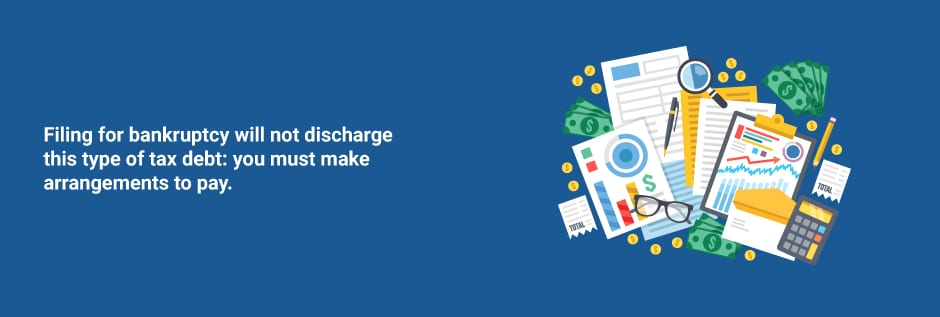
The IRS imposes the trust fund recovery penalty or TFRP based on two factors: (1) responsibility and (2) willfulness. They assess those who intentionally failed to collect trust fund taxes from employee wages and remit them. Depending on the company, this could be:
- The owner(s)
- CEOs and Directors
- Company shareholders
- Board of trustees (for nonprofits)
- Key employees
- Outside parties such as bookkeepers, accountants, and payroll administrators
For these parties to be held liable, the IRS needs to prove that:
- They knew about the outstanding taxes due and intentionally failed or refused to disperse the funds to the IRS, or
- They should have known about the overdue taxes but were simply indifferent to their tax obligations.
The key element the IRS looks for is control of the finances. Who is the shot caller when it comes to paying (or not paying) bills? Here are some of things the IRS will look at:
- Are you an officer or member of the board of directors?
- Do you own shares or have some other stake in the company?
- Are you active in the day to day management of the company?
- Can you hire and fire employees?
- Do you make decisions regarding which, when, and in what order debts or taxes will be paid?
- Do you exercise control over daily bank accounts and disbursement records?
- Do you have check signing authority?
The IRS does not have to establish that the company representatives acted maliciously or with evil intent. As long as they knew or should have known about the outstanding employment taxes and did not take appropriate measures, their actions are considered willful.
Here’s how the TFRP investigation works: An IRS revenue officer—essentially a collector for the government—will examine company bank statements, canceled checks, bank card PINs, and online account passwords to identify who pays the bills, other creditors, and controls disbursements. The revenue officer will ask the company owner for this information. If they can’t get it from him or her, under the Internal Revenue Code, the revenue officer can and will summons bank records to obtain the information.
The revenue officer will use this information to determine potential responsible persons. The revenue officer will continue the TFRP investigation by completing a 4180 interview to determine whether the person interviewed or others or both should be personally liable for the tax liabilities and are indeed a responsible person. The Form 4180 is the “Report of Interview with Individual Relative to Trust Fund Recovery Penalty or Personal Liability for Excise Taxes.”
Catchy title, right?
The 4180 interview will make or break you and ultimately determine whether you’re assessed the TFRP and are a responsible person. If things go well, you could be off the hook. If things go poorly, you’ll be a responsible person and assessed the TFRP. If you’re handling things by yourself (not recommended), study the form carefully and make sure you answer the questions directly. The interview process generally happens in person, but sometimes the interview process is done telephonically.
Most often, there are unpaid trust fund taxes for several quarters, even years. When a company gets behind in employment taxes, it snowballs. It’s important to complete different Form 4180s for each period as your role in the company may have changed. Maybe you started as a sales associate and ended up as CFO. You would likely answer questions on the Form 4180 completely differently when your roles changes.
Appealing the TFRP: When the Form 4180 Interview Goes Badly

If the 4180 interview goes poorly, all hope is not lost. The revenue officers are not the final decision maker. The IRS will send a proposed assessment, and you will have 60 days to appeal before the IRS assesses the civil penalty. If you think you have a solid case, file the appeal timely. Even if you don’t have a solid case, there still might be reasons to file the appeal and obtain more time.
One benefit to Appeals is that appeals officers can consider the risk of litigation. Even if you don’t have a bullet proof case, you may be able to raise enough hazards where the IRS will agree to some sort of settlement. So it may be worth going to the appeals office and fighting your case.
To prepare for appeals, file a Freedom of Information Act (“FOIA”) request. You’ll be able to get a copy of the revenue officer’s notes, which could give additional insight as to why she believes you should be liable. Perhaps she thought you had actual control of the finances when you only had control on paper. Make your case thoroughly and clearly. Appeals officers have a never-ending caseload. Make their job as easy as possible.
District Court Litigation: A Final Out for the Trust Fund Recovery Penalty
If the revenue officer finds you liable and the appeals officer agrees, you do have an additional weapon left in your arsenal—district court. District Court is really the last resort. The time and cost commitment rarely make it a viable alternative.
You need to pay to play. You don’t have to pay the entire trust fund liability, only the withholding tax for one employee for each quarter you wish to contest. After paying, you’ll file a refund claim which will almost certainly be denied. Once it’s denied, you’ll be able to take the case to district court by filing a refund suit.
A word of caution—once you lose the case at Appeals, the IRS can and will try to collect the liability from you. The claim for refund process will not delay collections.
Should We Do an Example? Let’s Do an Example.
Elmo owns 50% of Sesame Street Construction Company. Why a construction company? Let’s just say they don’t have the best reputation for paying their payroll taxes (no offense).
Bert and Ernie each own 25%. Big Bird is the foreman. All four have check signing authority. Big Bird has authority, but only signs an occasional check when it’s convenient. Elmo is the CEO and is active in all the day-to-day decision-making. Bert runs the office, pays the bills, and generally helps keep the lights on.
Ernie is talented with his hands, but not great with numbers. He leads the projects, but stays out of the finances.
Who will the IRS go after? They will probably take a look at everyone. Elmo will certainly be assessed, and Bert is not far behind. Ernie and Big Bird have a fighting chance. If they can’t convince the revenue officer, they can take it to appeals.
Paying (or Not Paying) the TFRP
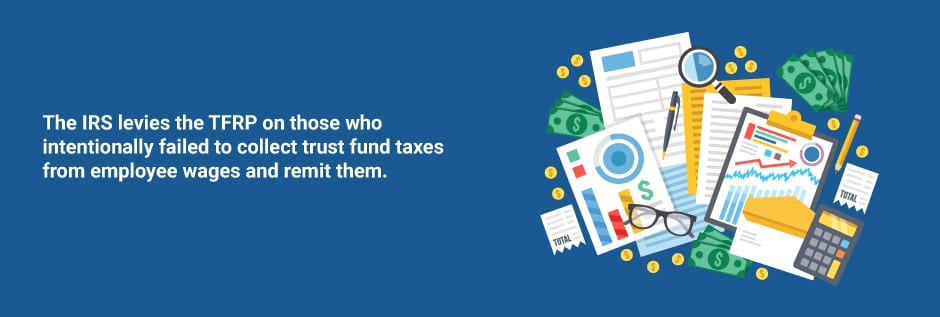
If the revenue officer finds you liable and the appeals officer agrees, you do have an additional weapon left in your arsenal—district court. District Court is really the last resort. The time and cost commitment rarely make it a viable alternative.
You need to pay to play. You don’t have to pay the entire trust fund liability, only the withholding tax for one employee for each quarter you wish to contest. After paying, you’ll file a refund claim which will almost certainly be denied. Once it’s denied, you’ll be able to take the case to district court by filing a refund suit.
A word of caution—once you lose the case at Appeals, the IRS can and will try to collect the liability from you. The claim for refund process will not delay collections.
Should We Do an Example? Let’s Do an Example.
Elmo owns 50% of Sesame Street Construction Company. Why a construction company? Let’s just say they don’t have the best reputation for paying their payroll taxes (no offense).
Bert and Ernie each own 25%. Big Bird is the foreman. All four have check signing authority. Big Bird has authority, but only signs an occasional check when it’s convenient. Elmo is the CEO and is active in all the day-to-day decision-making. Bert runs the office, pays the bills, and generally helps keep the lights on.
Ernie is talented with his hands, but not great with numbers. He leads the projects, but stays out of the finances.
Who will the IRS go after? They will probably take a look at everyone. Elmo will certainly be assessed, and Bert is not far behind. Ernie and Big Bird have a fighting chance. If they can’t convince the revenue officer, they can take it to appeals.
Paying (or Not Paying) the TFRP

The sooner you contact the IRS to arrange an agreement, the better your chances of not having your wages garnished and assets seized. Filing for bankruptcy will not discharge this type of tax debt: you must make arrangements to pay (or get on CNC status, outlined below).
If you cannot immediately pay the penalty amount in full, there are other options available to you:
-
Installment plan. A repayment plan is set up for both the business and the responsible party, such as the owner or CEO. Once the balance is paid off after multiple installment payments, the debt is satisfied. You may also be able to negotiate a “link and defer” plan. This means only the business pays on an installment agreement. You only need to pay personally if the business defaults.
-
Offer in Compromise. With an Offer in Compromise, the IRS and the taxpayer agree to settle the tax debt for a lesser amount, which is generally derived from a calculation that assesses what the taxpayer can pay after their necessary expenses are met.
-
Currently Non-Collectible (CNC) Status. If you can’t pay the tax debt and meet your necessary expenses, you can apply for CNC status. The IRS will temporarily pause collection actions until you can pay, but any tax refunds will be garnished, and the IRS can still file a Notice of Federal Tax Lien.
Trust Fund Recovery Penalty FAQs
How Long Does the IRS Have to Assess the Trust Fund Recovery Penalty?
The IRS has 3 years to assess the trust fund recovery penalty. But—and this is a big but—the 3-year period only starts if the company filed the payroll tax returns. Often, businesses who cannot afford the payroll taxes stop filing, perhaps thinking the IRS won’t notice. (They will…eventually.) In almost every single case, you are better off filing and owing than not filing at all. So even if you do not have the funds to pay, make sure you file. It’ll start the 3-year clock.
How Much is the Trust Fund Recovery Penalty?
The IRS has 3 years to assess the trust fund recovery penalty. But—and this is a big but—the 3-year period only starts if the company filed the payroll tax returns. Often, businesses who cannot afford the payroll taxes stop filing, perhaps thinking the IRS won’t notice. (They will…eventually.) In almost every single case, you are better off filing and owing than not filing at all. So even if you do not have the funds to pay, make sure you file. It’ll start the 3-year clock.
What Is the 4180 Interview?
The 4180 interview is an interview conducted by an IRS revenue officer to determine whether that individual should be responsible for the trust fund recovery penalty.
Can I Go to Jail for Not Paying Payroll Taxes?
Yes. The government prosecutes payroll cases with greater frequency than income tax cases. If charged, you could face 5 years in prison and a $10,000 fine.
Can Minority Shareholders Be Responsible for the Trust Fund Recovery Penalty?
Yes. If you meet the two factors above, you are responsible for the tax debt. And it doesn’t matter if you are a 3% shareholder, you are responsible for 100% of the tax debt. You won’t simply be responsible for 3% of the tax liability.
Is the Trust Fund Recovery Penalty the Same As the Employer’s Liability?
Not exactly. The Trust Fund Recovery Penalty is a separate assessment on an individual. The IRS can collect the trust fund taxes from either the responsible person(s), the business, or both. The IRS will continue collection efforts until the entire liability is paid, regardless of who pays for it.
Does the Trust Fund Recovery Penalty Survive When a Business Closes?
Yes. Even if the business collapses, the IRS can and will still collect from responsible persons.
Is the Trust Fund Recovery Penalty the Same As the Employer’s Liability?
Not exactly. The Trust Fund Recovery Penalty is a separate assessment on an individual. The IRS can collect the trust fund taxes from either the responsible person(s), the business, or both. The IRS will continue collection efforts until the entire liability is paid, regardless of who pays for it. The business will likely also owe non trust fund portion of employment taxes, but this portion cannot be assessed on a responsible person.
Do I Need to Meet with the Revenue Officer to Complete Form 4180 and the Trust Fund Interview?
It depends. Sometimes, the revenue officer will allow you to complete the form, sign it, and mail it back. Other times, they will want to conduct interviews in person. If you refuse, the revenue officer will summons you to appear, forcing you to complete the interview in person. The IRS has wide legal authority, especially when it comes to trust fund taxes. It’s also possible they want to interview you to figure out if someone else acted willfully and should be considered responsible. They may seek information about day to day affairs or try to determine what the available funds were and why full payment of the employment taxes were not made.
I have another tax liability in addition to owing trust fund taxes. What are my options?
If you were found to be a responsible person, and also owe income taxes, you can provide a collection information statement and try to negotiate a payment plan. Other options are available as well.
Do I Need to Hire an Attorney to Handle This?
Do you need to see a doctor about that nagging chest pain? No, but it’s a really, really good idea. The IRS takes payroll taxes very similarly, and there’s more risk of criminal prosecution than regular old income tax. In addition, the IRS is quicker and more aggressive on the collection side, often threatening to shut down the business to stop the payroll taxes from pyramiding. So while you theoretically can handle the case by yourself, you should seriously consider hiring a tax attorney.
Contact a Trusted TFRP Tax Attorney Today
If you have received notice of an imminent Trust Fund Recovery Penalty, it is important to act quickly and hire an experienced tax law attorney who understands the TFRP process and can guide you toward a more positive outcome. At Paladini Law, we will help you mitigate the consequences of not paying trust fund taxes by negotiating a fair Offer in Compromise or repayment plan. For more information, please contact us today.
